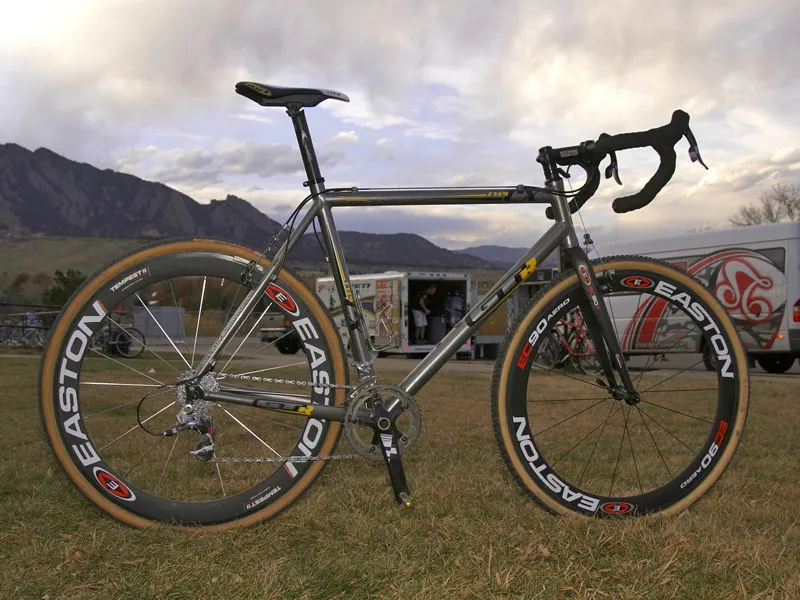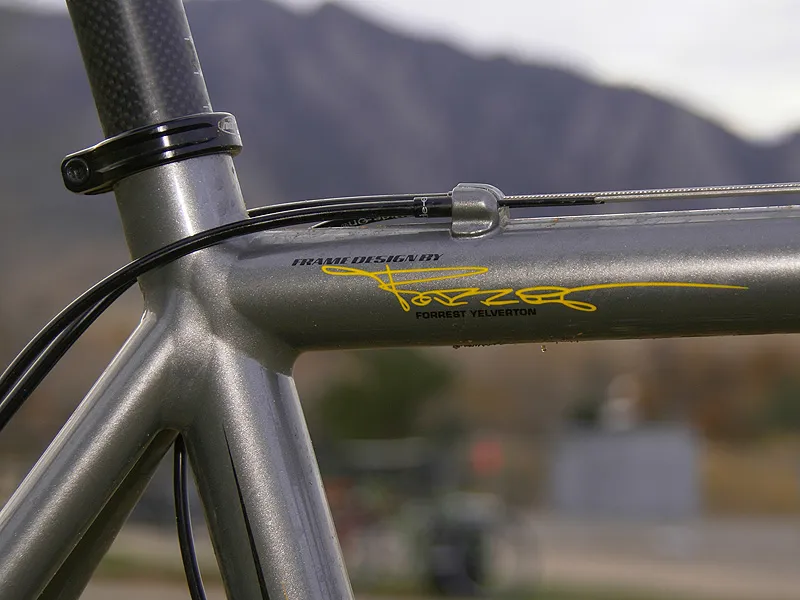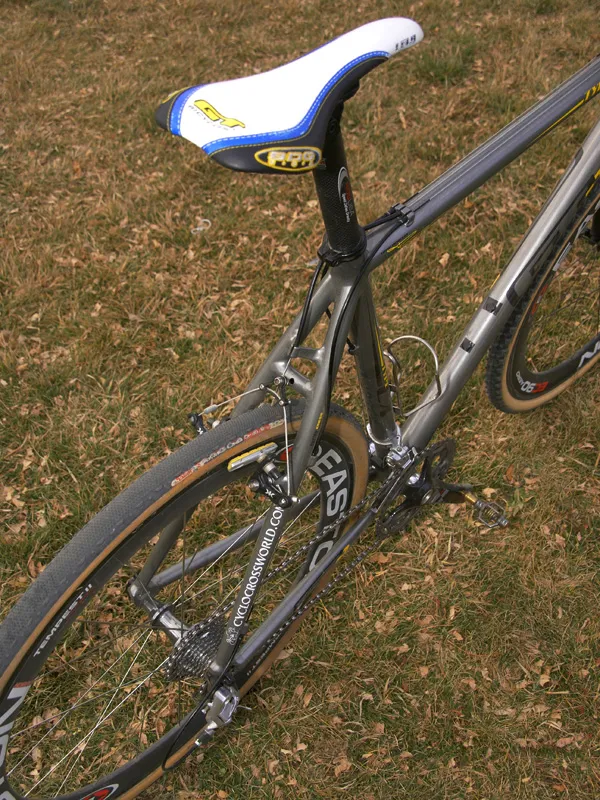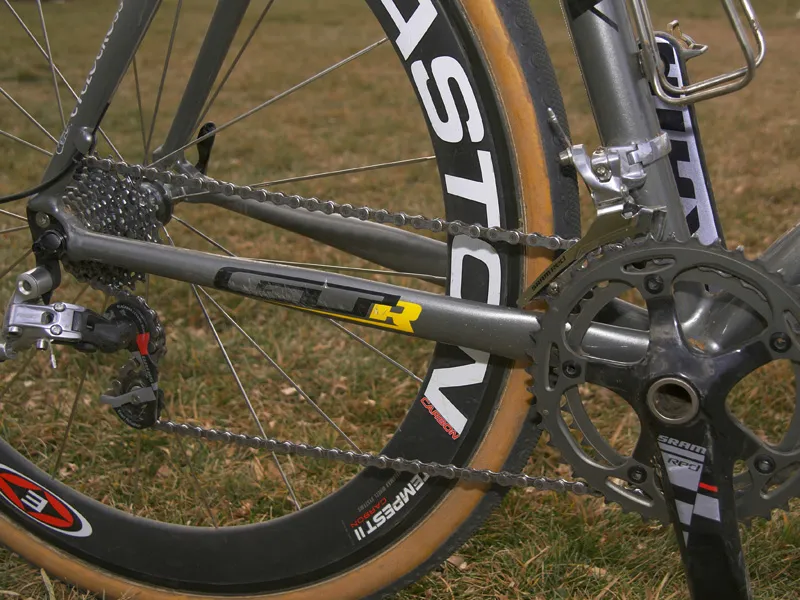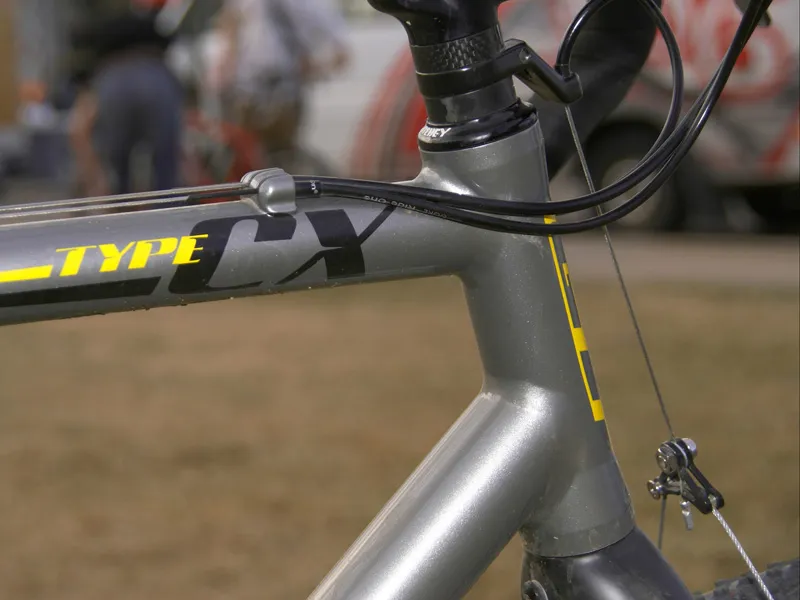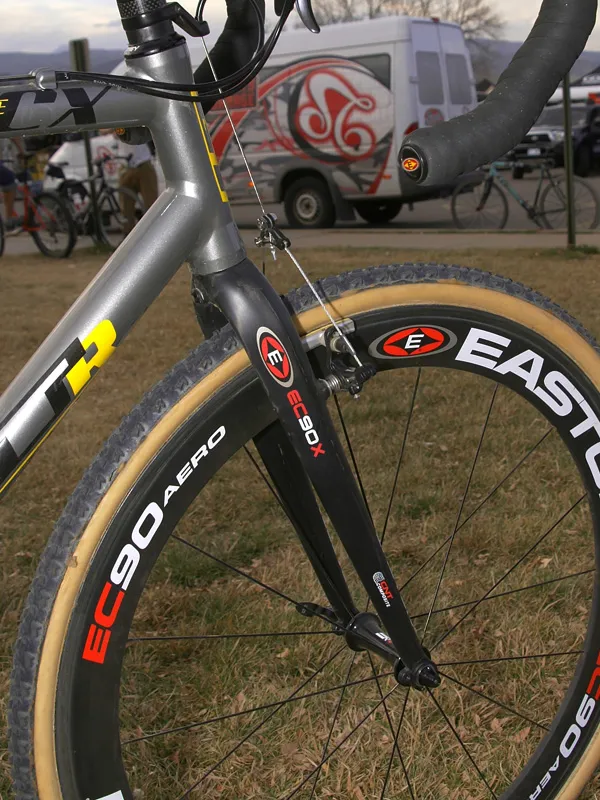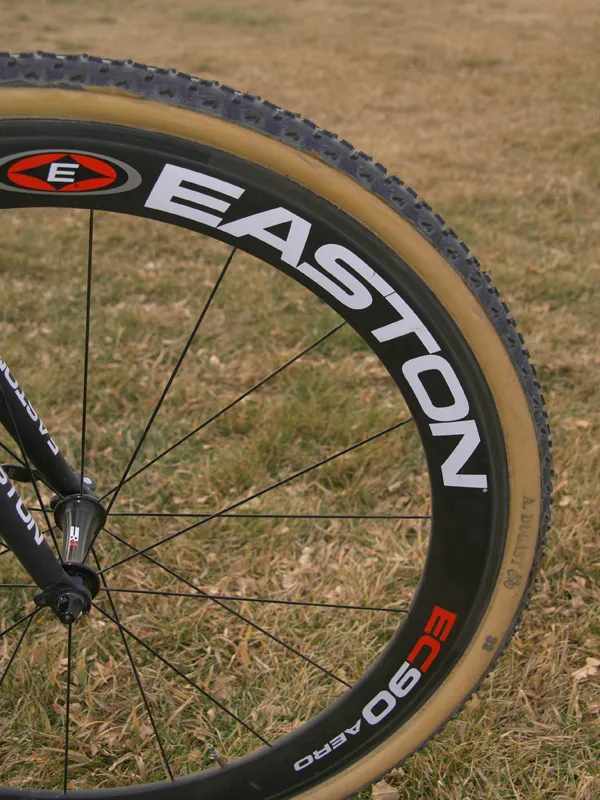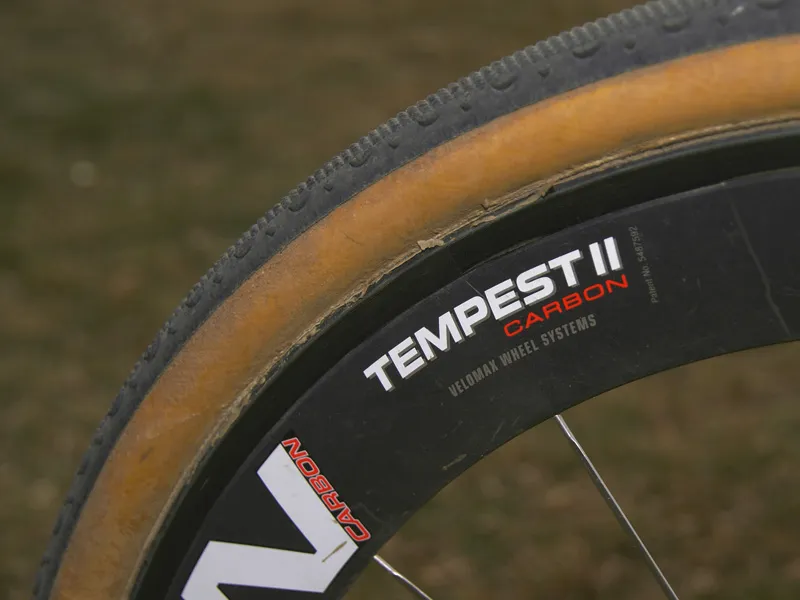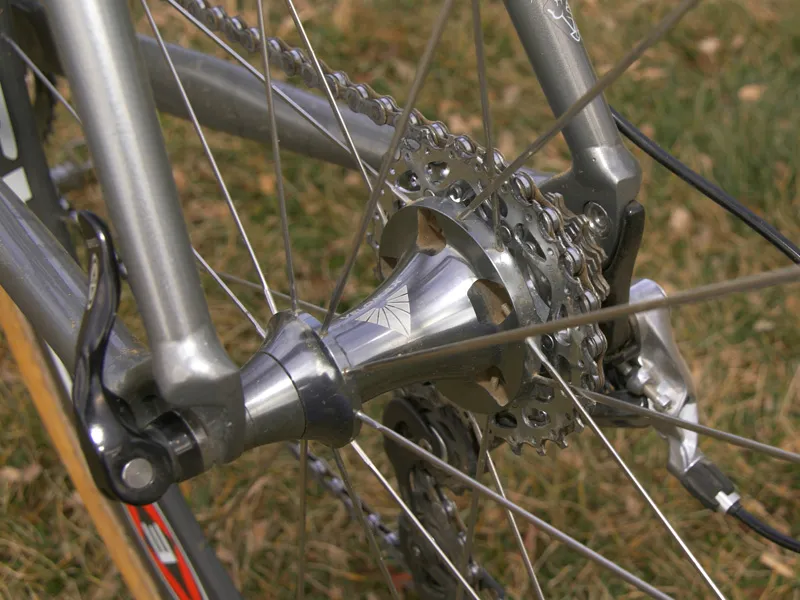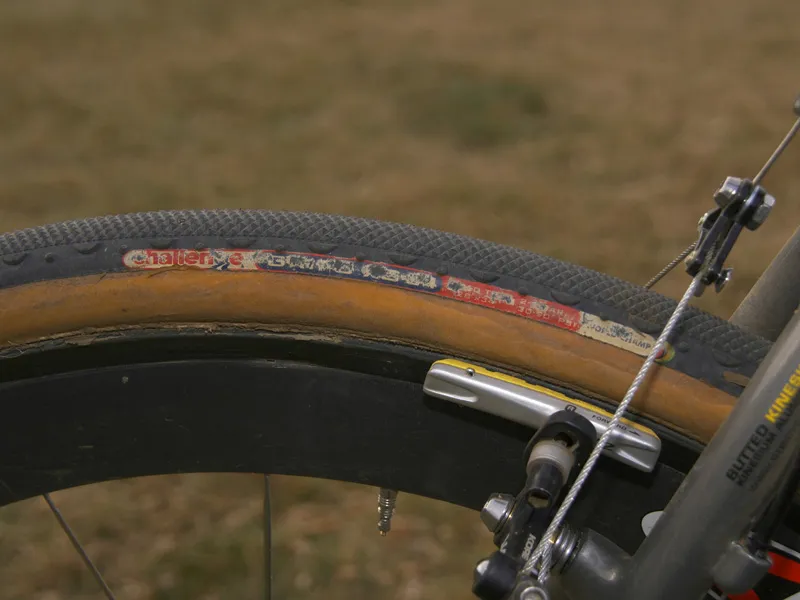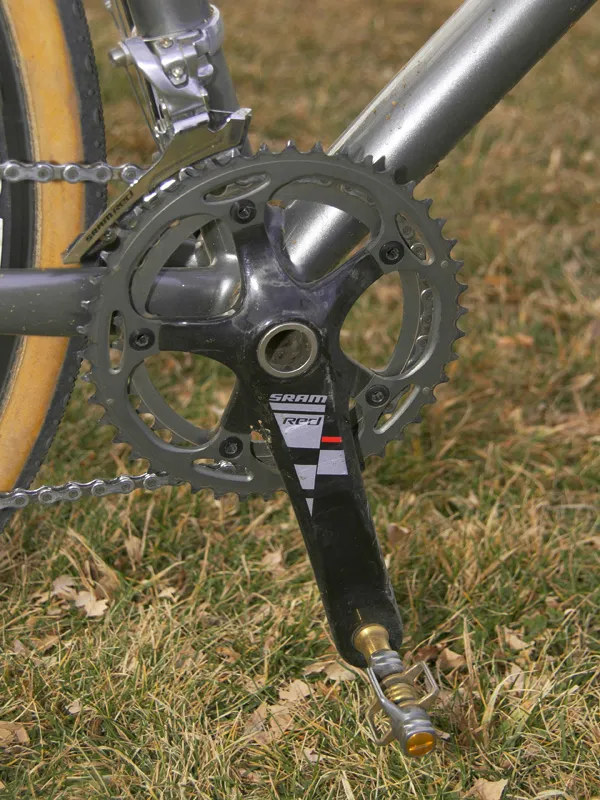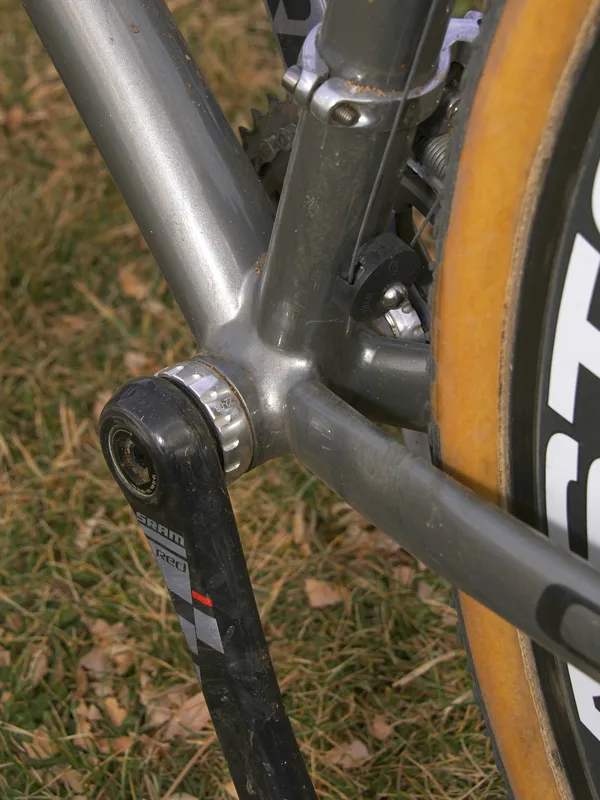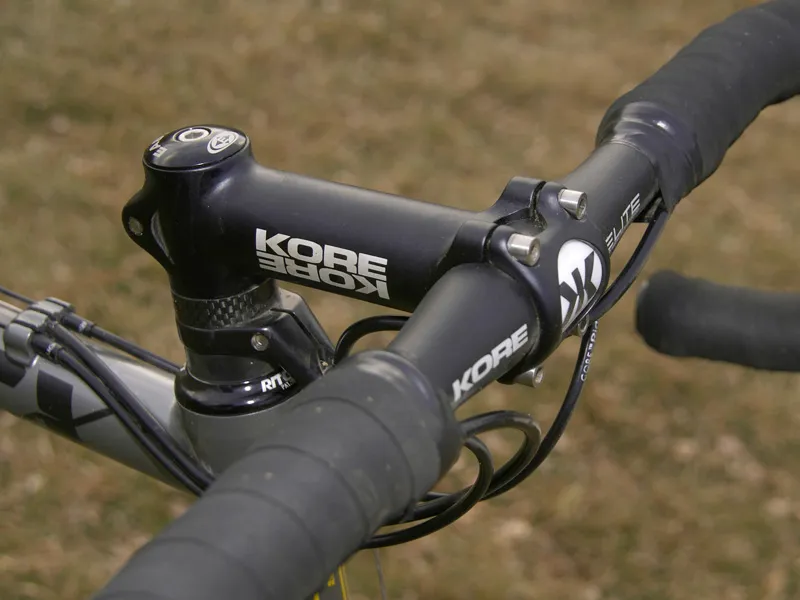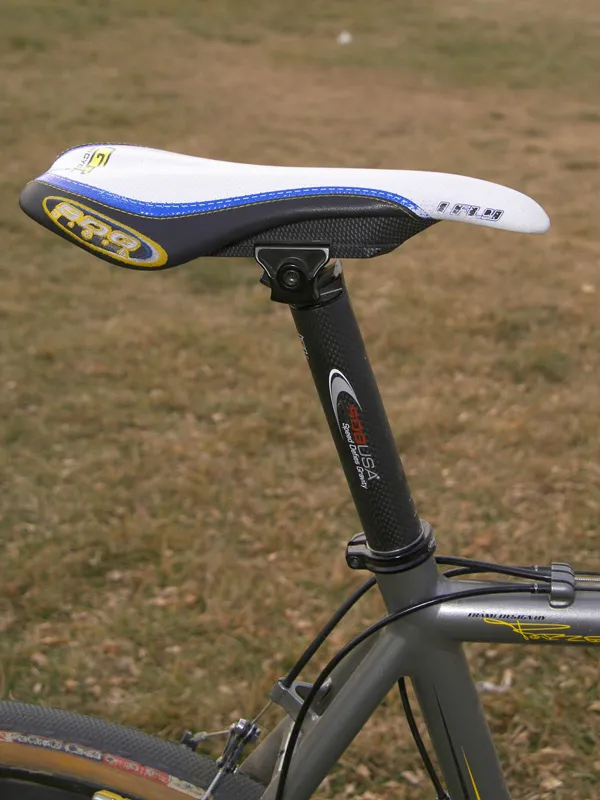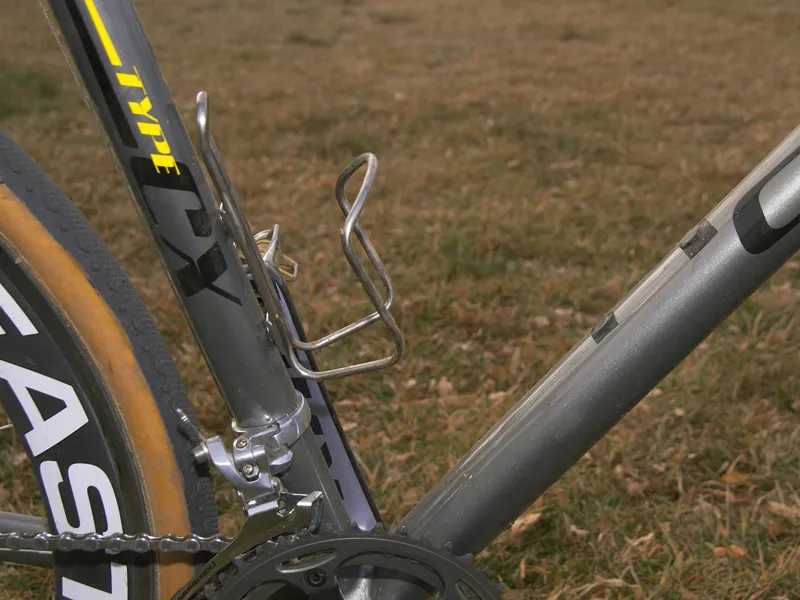Two-time US cyclo-cross champion Todd Wells is adopting a familiar formula for the 2008 season with his GT GTR Type CX 'cross machine.
In the past, Wells used a custom frame built by GT just for him, but the company incorporated the model into its lineup last year. The XL-sized production model is said to be exactly the same as the one the two-time Olympian competes on each weekend.
Not much has changed frame-wise for the 2009 model as the Type CX carries on with the same TIG-welded butted Kinesis Kinesium fully aluminium alloy construction and proven geometry that has worked so well in the past.
Even so, a few subtle details improve things: a welded-on rear brake housing stop is now integrated into the top of the seatstays to replace the bolt-on hanger that once dangled from the seat collar and clearance has improved between the rear stays. Wells says: “It’s much better for muddy conditions this year.”
Most of Wells’ componentry choices have also carried over from last year including the SRAM Red group, Easton wheels and fork, KORE cockpit and brake bits, Crankbrothers Eggbeater 4Ti pedals and SDG I-Beam saddle and seatpost.
Even so, 2008 has brought with it a few key equipment changes. Wells ran a single chainring on his SRAM Red crank last year in the hope of shedding some weight and gaining some reliability, especially on muddier courses. However, even with two chainguards he still dropped his chain on a few occasions.
This year he has reverted back to a more conventional two-ring setup, albeit with new prototype SRAM 39/46T ‘cross-specific chainrings. According to Wells, the two-ring configuration has turned out to be more reliable and “is also nice when there are some really steep climbs where I would be cross-chained with a 42 but can have a better chainline with the small ring”.
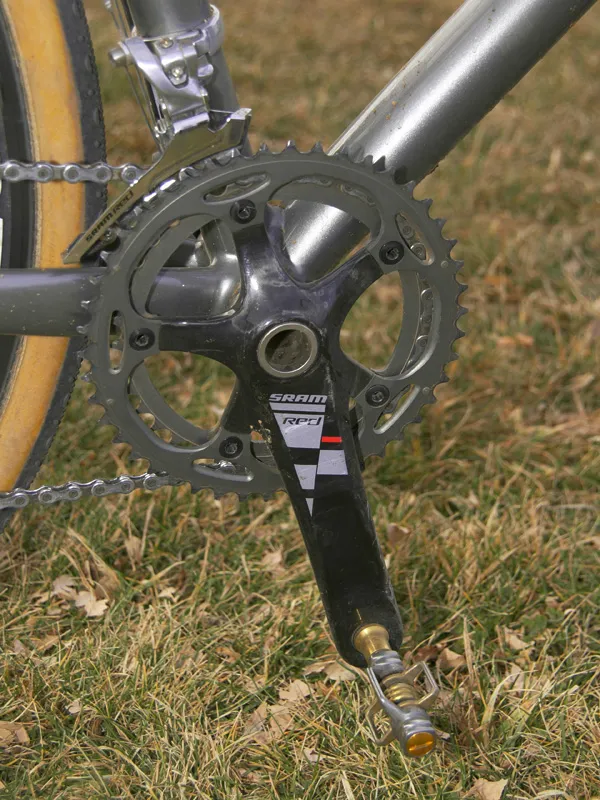
Like many SRAM-sponsored 'crossers, the Durango, Colorado, resident has switched to an OG-1070 cassette instead of the top-end OG-1090. “I use the 1070 cassette because it shifts better in muddy and dirty conditions then the 1090,” says Wells. “The 1090 doesn't have deep spacing between the cogs so it doesn't clear as well. In Boulder it would have been fine to run the 1090 but it's easier to stick with the 1070 in case conditions change.”
Wells was in the minority last season with his choice of a carbon fibre handlebar but jumped on the bandwagon for ’09 with a more conventional KORE Road Elite model made of 7075 aluminium. Although he probably misses the carbon bar’s 50g weight saving, the aluminium bar’s durability and grippier surface was apparently enough to justify the switch.
“The aluminium bar is new for a few reasons,” says Wells. “I had problems with my levers slipping down on the carbon bars on really rough courses. No matter how much I clamped the levers down they would slip sometimes when sprinting on the hoods in bumpy grass. Also, in 'cross it's easy to crash and carbon bars are more likely to break than aluminium bars. In addition to all that, with all the travel the aluminium bars seem to hold up better then the carbon.”
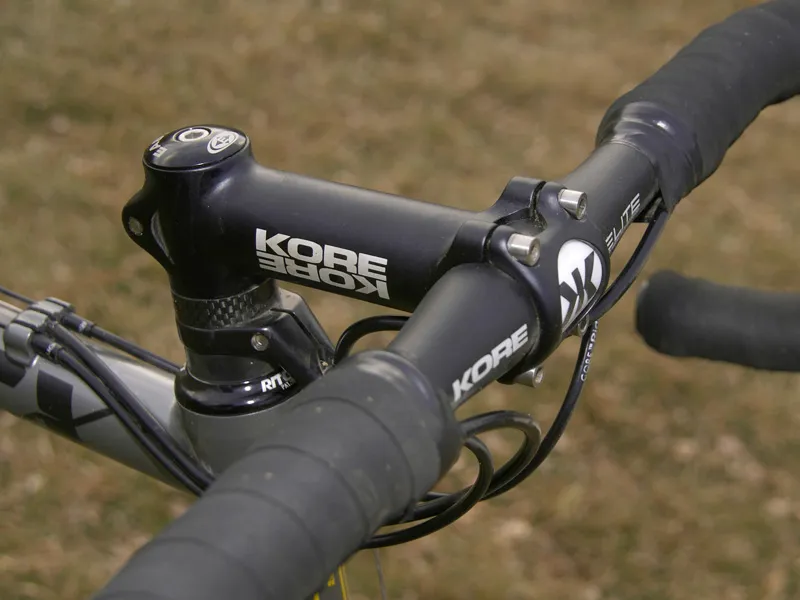
Cyclo-cross racing is renowned for its awful conditions but the recent Boulder Cup in Boulder, Colorado, provided a break from the norm with spring-like temperatures, bone-dry air and a dusty course.
As such, Wells’ Easton carbon wheels were shod with a fat 34mm-wide Challenge Grifo XS semi-slick tubular out back for a faster roll and increased cushion and an aggressive Dugast Rhino 32mm-wide tubular for better cornering grip. Both were treated with Aquaseal on the sidewalls which Wells says “adds a bit more protection for the rocks” and helps prevent dry rot.
For the Sunday race, Wells’ bike was fitted with something that would be unthinkable for European ‘cross events - a water bottle cage.
“In ‘cross you aren't allowed to [accept a] feed unless the official makes a special exception,” says Wells. “They didn't allow it in Boulder or Las Vegas so they pretty much never do. If it's over 60 degrees I usually run a bottle cage.
“We don't have to run much in the US usually and the weight isn't an issue. I think it's more a style thing in the US. Everyone here thinks they are racing in Europe where it's 50 degrees and raining all the time so they don't need to drink. Here we're racing in the high desert where the air is thin and dry so I'd rather carry a bottle than ride around with a dry mouth.”
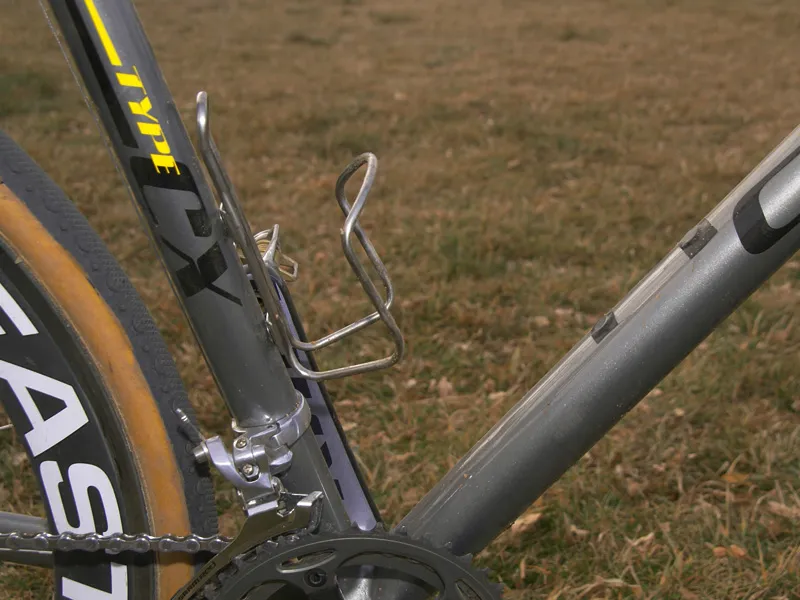
With just one weekend of racing remaining in the US Gran Prix of Cyclo-cross (USGP), Wells’ consistent performances find him atop the standings for the first time in his career as the series heads to Portland, Oregon on 6 and 7 December. If last year’s conditions (and the Pacific Northwest’s reputation for rain) are any indication, we’re guessing Wells won’t be needing that bottle cage the next time around.
Specifications
- Frame: GT GTR Type CX, size XL
- Fork: Easton EC90X
- Headset: Ritchey integrated
- Stem: KORE Race w/ titanium hardware, 11cm x -6°
- Handlebars: KORE Elite, 44cm (c-c)
- Tape/grips: Easton cork, double wrapped
- Front brake: KORE Race+ w/ Avid Rim Wrangler 2 pad holders and SwissStop Yellow King pads
- Rear brake: KORE Race+ w/ Avid Rim Wrangler 2 pad holders and SwissStop Yellow King pads
- Brake levers: SRAM Red DoubleTap
- Front derailleur: SRAM Force (badged as SRAM Red)
- Rear derailleur: SRAM Red
- Shift levers: SRAM Red DoubleTap
- Cassette: SRAM OG-1070, 11-26T
- Chain: Shimano Dura-Ace CN-7801
- Crankset: SRAM Red, 175mm, w/ prototype 39/46T chainrings
- Bottom bracket: SRAM Red
- Pedals: Crankbrothers Eggbeater 4Ti
- Front wheel: Easton EC90 Aero
- Rear wheel: Easton Tempest II
- Front tyre: Dugast Rhino tubular, 32mm, w/ latex sidewall coating
- Rear tyre: Challenge Grifo XS tubular, 34mm, w/ latex sidewall coating
- Saddle: SDG I-Fly GT team issue
- Seatpost: SDG I-Beam 951 Micro Carbon
- Bottle cages: King Stainless
Critical measurements
- Rider's height: 1.9m (6' 2")
- Rider's weight: 77kg (170lb)
- Seat tube length, c-c: 540mm
- Seat tube length, c-t: 583mm
- Saddle height, from BB (c-t): 802mm
- Tip of saddle nose to centre of bars (next to stem): 595mm
- Centre of front wheel to top of bars (next to stem): 640mm
- Top tube length: 585mm
- Total bicycle weight: 8.17kg (18.0lb)
